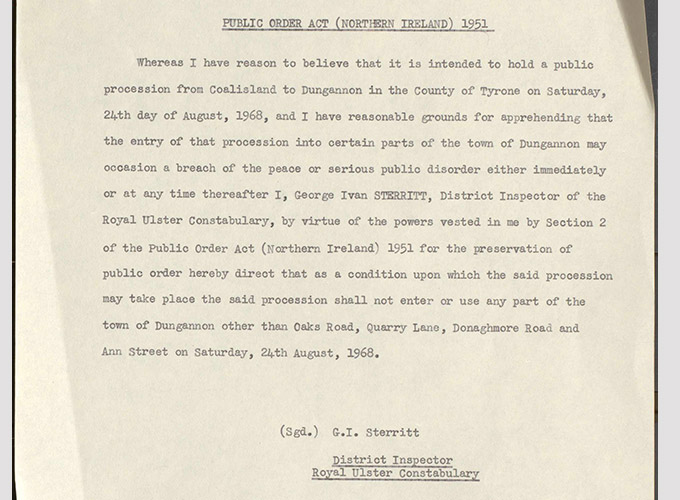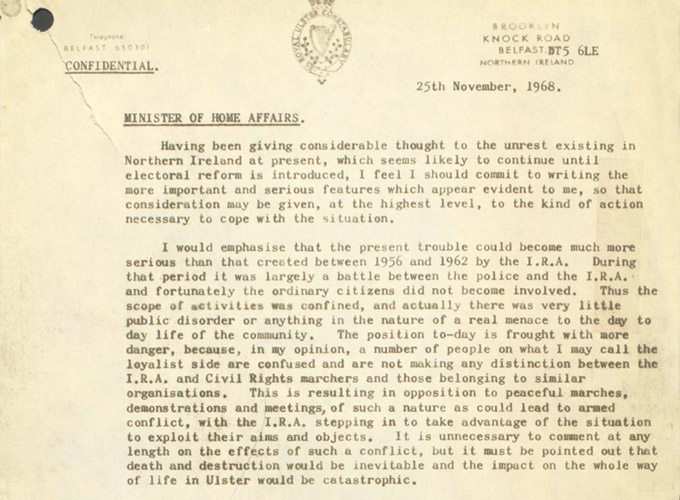Description
Memo from the Royal Ulster Constabulary (RUC) District Inspector Sterritt, banning a civil rights march from entering Dungannon under the Public Order Act (1951). In June 1968, Austin Currie, Nationalist MP for East Tyrone staged a sit-in in a flat in Caledon, Co. Tyrone. He believed that the flat had been unfairly assigned to a Protestant single girl at a time when many Catholic families were homeless. Currie persuaded the Northern Ireland Civil Rights Association (NICRA) to organise a protest march to draw attention to the allocation of public housing in Co. Tyrone. Under the Public Order Act of 1951, all but traditional street demonstrations were prohibited unless the police were given advance notice. Non-traditional marches could be banned or rerouted. The civil rights march was planned for 24 August and aimed to cover the five mile route from Coalisland to Dungannon finishing with a rally and speeches in the Market Square. The Rev. Ian Paisley organised a counter-demonstration and the NICRA march was banned from entering the centre of Dungannon. The civil rights march went ahead but was prevented from entering Dungannon by 400 police with dogs and tenders. The marchers sat down in front of the police barricade and listened to speeches before dispersing.
NICRA organised a second march for 5 October 1968 in Londonderry. The Apprentice Boys planned a counter-demonstration and both marches were banned under the 1951 Public Order Act. NICRA went ahead with their planned march, but found the route blocked by RUC officers with batons. A sit-down protest was attempted but marchers were baton-charged by the police. The crowd dispersed but police continued to baton the demonstrators. Angry crowds of local people gathered to taunt the police and a stone-throwing battle between the Catholic youth and the RUC ensued. Footage of the police baton-charging unarmed demonstrators and injuring MPs was shown around the world. The actions of the police and government were widely criticized and violent disorder including the throwing petrol bombs and the looting of shops continued throughout the following day. Civil rights marches and counter-marches continued throughout the Autumn of 1968. The RUC became increasingly over-stretched dealing with the resulting outbreaks of street violence.
Links
- Related objects > RUC equipment from the Battle of the Bogside
- Related objects > People's Democracy badge
- RTE Archives: Civil rights march in Derry 5th October 1968
- CAIN: Early days of the civil rights movement
- CAIN: The Derry march (5th October 1968)
- CAIN: Cameron report - 'Disturbances in Northern Ireland'



